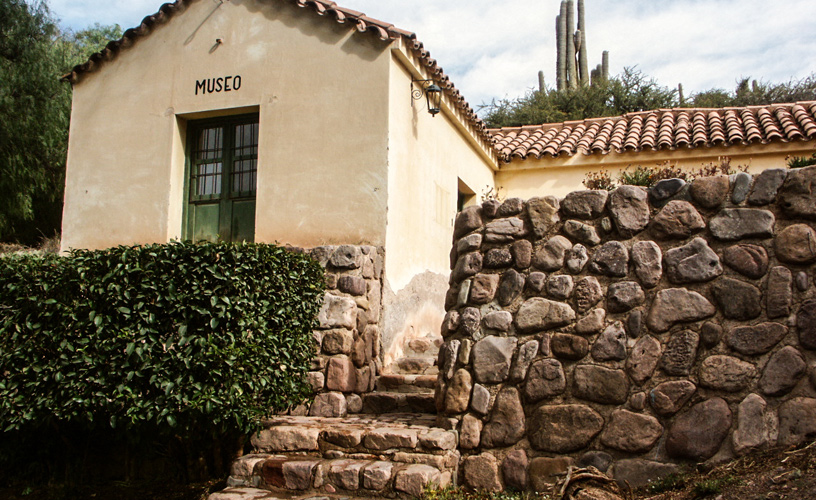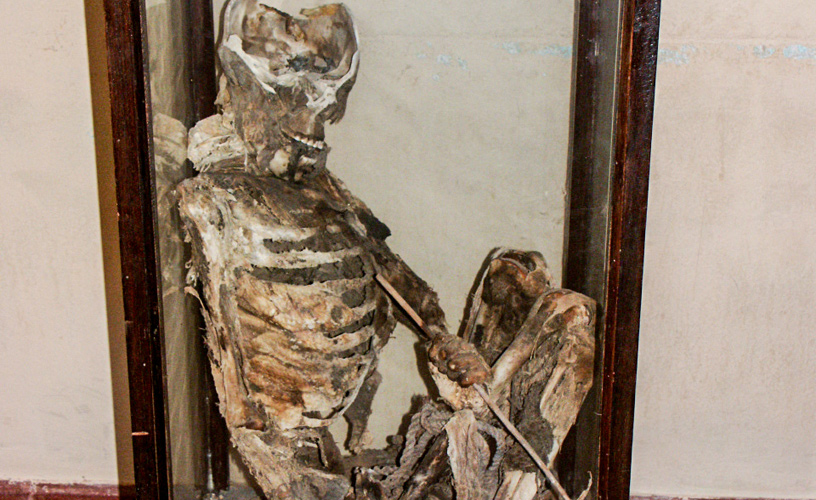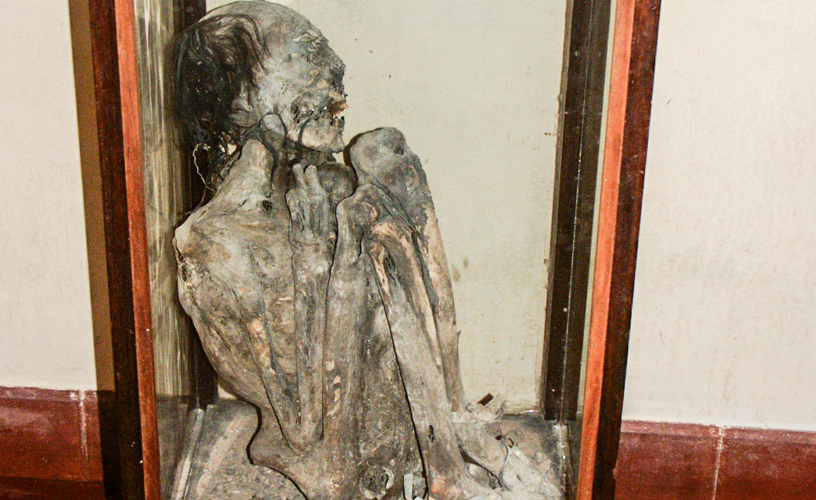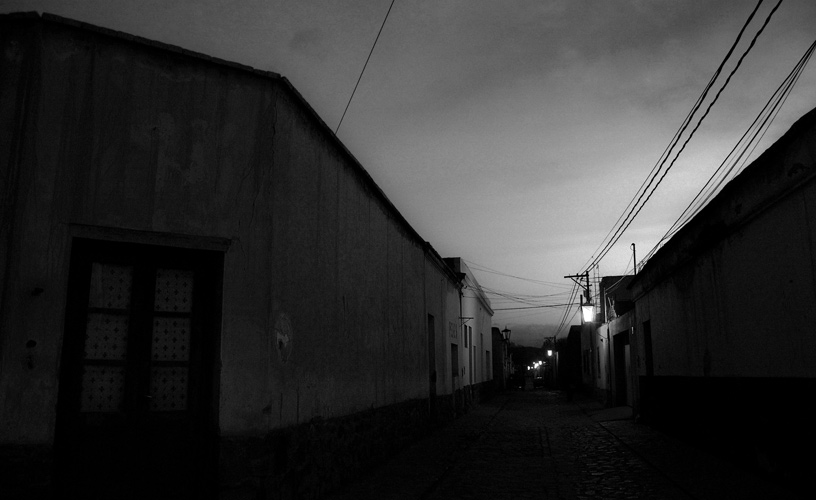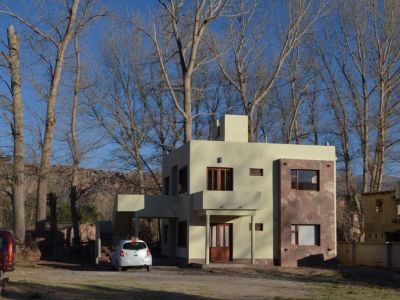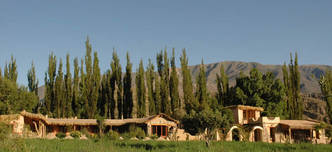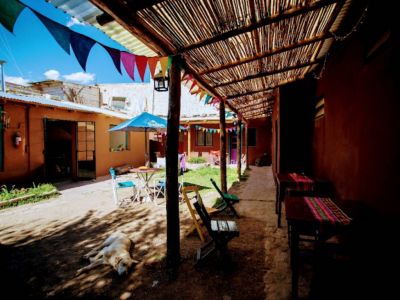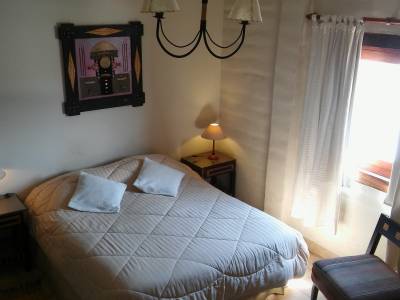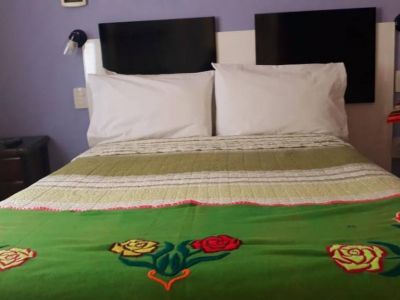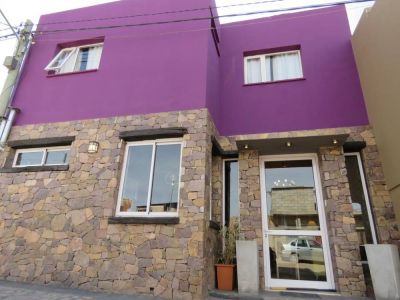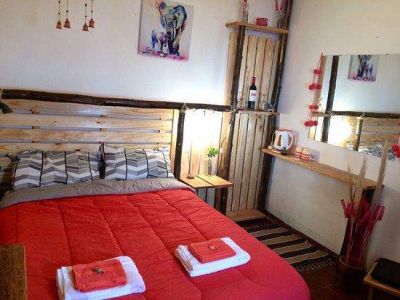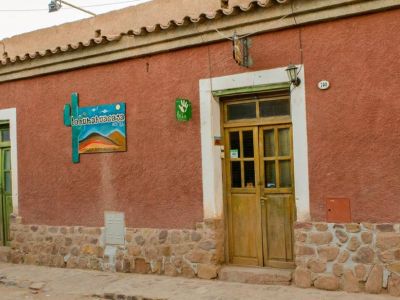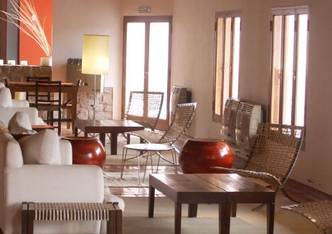The exhibitions you will be visiting have been organized by Tilcara Interdisciplinary Institute of Buenos Aires University, under the management of Lic. Norberto Pelissero.
Once inside the building, you will go around the rooms and observe elements like petroglyphs, axes, rocks and indian cementeries as you learn the meanings of these ancestral manifestations.
Visitors' attention is caught by the presence of two mummies placed in showcases in the position and with the ornaments that were found with.
Municipal Archaeological Museum
Mummy Nº 1 is in foetal position. It is tied with strings made of vegetal fibre and wrapped in delicate cloths with ornaments dyed in red of llama and vicuña wool.
Mummy Nº 2 is not shown as it is generally done in the rest of indian cementeries of the area - with a special preparation of the body. It is in foetal position having in its left hand a kind of spinning in different colours.
Early Period Room: This prehistorical Era is the least known by investigators. The only true fact that can be prooved is that it was a period during which permanent settlements in native communities established in the Narrow Path and spent their time working in agricultural activities with a slight development in farming techniques.
Middle Period Room : This stage must be considered as the historical period that shows the cultural climax of the region, going from 800 to 1100 A.D.
In this room, you will learn that this period was the cultural cradle of metallurgy in the Quebrada of Humahuaca area since abundant instruments in copper or bronze were produced such as chisels, burins and personal articles like bracelets and rings which , added to silversmithing and goldsmithery ( not ordinary in the region), made up a valuable metallurgy and pure technology.
Late Period Room: As you go around this room, you will learn that the period started around 1100 A.D. The wallpapers will tell you that this cultural moment is known because of the presence of a bigger population.
In the Indian Cementeries Room, you will learn that they change as one goes along Humahuaca Narrow Path from South to North. The settlements located in the Southern area have the same feature- cementeries with burials whereas the ones in the Northern area have trousseau and the corpses are buried in dorsal cubitus position.
You will finally learn that the analysis of the corpses is very useful to get to some determinations given by the dead's excrements. From them , the diet of the dead person and of his group is known and , then, animals and vegetals eaten are infered.
As you finish the visit, you can share with the group what you have learnt about the different aspects that forged the culture of the area by means of looking up in your memory and surprising yourself as you find how much you have learnt.
Marcelo Sola
Marcelo Sola
